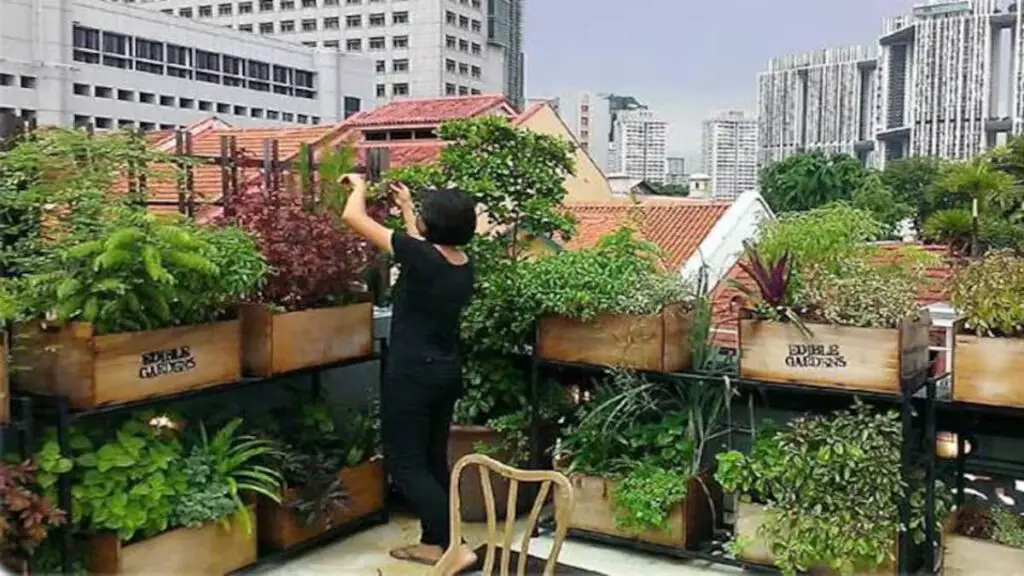Introduction: Why Urban Spaces Need Green Solutions
In the heart of bustling cities, where concrete reigns supreme and the hustle and bustle can be overwhelming, urban gardens, particularly roof gardens, emerge as essential sanctuaries of peace and greenery. These innovative spaces not only beautify urban areas but also provide numerous environmental, social, and economic benefits. Integrating nature into urban planning through roof and garden installations is no longer just a luxury but a necessity for enhancing the quality of life in urban settings.
Environmental Benefits: Combatting Urban Heat and Enhancing Air Quality
One of the most significant environmental impacts of roof and garden spaces in urban areas is their ability to combat the urban heat island effect. This phenomenon occurs when cities become significantly warmer than their rural surroundings, primarily due to human activities. Roof gardens help reduce this effect by replacing heat-absorbing concrete and asphalt with vegetation that cools the air through a process called evapotranspiration. Additionally, the added greenery improves air quality by filtering out pollutants and producing oxygen, creating a healthier living environment for urban residents.
Biodiversity Enhancement: Supporting Urban Wildlife
Roof gardens also play a crucial role in enhancing biodiversity in urban areas. By providing habitats for various species of birds, insects, and even small mammals, these green spaces contribute to the preservation of biodiversity that would otherwise be scarce in city environments. Planting a variety of flora in urban gardens not only supports local wildlife but also promotes ecological balance, essential for maintaining the health of any urban ecosystem.
Social Benefits: Creating Community Spaces and Reducing Noise
The inclusion of garden and roof spaces in urban design offers substantial social benefits. These areas serve as communal spaces where residents can gather, relax, and interact, thereby fostering community relationships and improving mental health. The natural environment of roof gardens can significantly reduce stress and increase residents’ overall well-being. Moreover, these gardens provide a natural sound barrier, reducing the impact of urban noise pollution—a common issue in densely populated areas.
Economic Advantages: Increasing Property Value and Reducing Energy Costs
From an economic perspective, the integration of gardens and particularly roof gardens in urban landscapes can lead to considerable financial benefits. Properties with garden spaces tend to have higher market values due to their aesthetic appeal and the quality of life they offer. Furthermore, roof gardens can lead to energy savings for building owners. The insulation provided by these gardens reduces the need for heating and cooling, leading to lower energy consumption and subsequently, reduced utility bills.
Sustainable Urban Development: The Role of Roof and Garden Spaces
As cities continue to grow, the role of sustainable urban development becomes increasingly crucial. Roof and garden spaces are integral components of sustainable architecture, contributing to the management of stormwater runoff, reducing greenhouse gas emissions, and providing energy-efficient solutions. By incorporating these green spaces into urban planning, cities can take significant steps towards sustainability, ensuring a healthier and more sustainable environment for future generations.
Conclusion: Embracing Roof and Garden Spaces for a Better Urban Future
The integration of roof and garden spaces in urban areas is not just a trend but a fundamental aspect of modern urban development that addresses several pressing challenges. By enhancing air quality, supporting biodiversity, providing valuable community spaces, and contributing to economic sustainability, these green spaces play a pivotal role in improving the livability and sustainability of urban environments.
Infographic provided by Chicago Canvas & Supply, a top textile and fabric distributor

